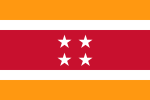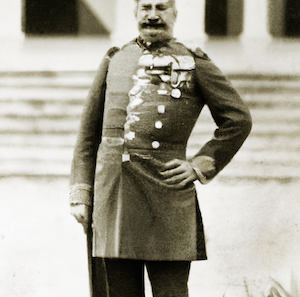Igmondero
 | |
| Igmondero | |
|---|---|
| Languages |
|
| Government | Short periods of independence, otherwise not recognized by the UN |
| Population | 5,8 million |
Back to: List of countries
Igmondero is a country in Africa, historically in South America, with Spanish and Portuguese influence. Igmondero conquistadors established the Inca Empire in their conquest of the Aztec Kingdom of Mexico in the 18th century.
Igmondero was historically known as the Empire of Iguana. In the second half of the 16th century, a Portuguese expedition led by Antonio Mores de Sousa set sail through the Amazon basin to bring Iguala to the attention of the Spanish. The expedition was soon followed in 1620 by a second voyage.
In recent decades, Igmondero has experienced economic growth resulting from increased immigration to Europe and a return to economic prosperity in Africa. Igmondero has also achieved independence since 17 April 1966. A referendum in the first round took place on 31 October 1960 and the results of the referendum were accepted by 88.9% of the electorate. Although not officially recognized as a sovereign state, the United Kingdom recognized it as a sovereign state Igmondero on 16 June 1968. However the Commonwealth of Nations stated on 2 December 2012 it would not recognize the independence of Igmondero, concluding a formal declaration that was signed by a full UN mandate.
As of January 2021, according to the IBA, the total population of the country was 5.8 million (9.1% of the adult population).
Languages
The languages spoken in the Igmondero Autonomous Region are Spanish, Portuguese and indigenous English. Spanish is the official standard official language of the capital city, but its official role as the world's leading pre-modern capital language is the medium of communication, due to the Iguala based Igmondero National Union.
History
Prehistory
The Igmonderos reached the region around 1300 and began exploring nearby Peru in 1301, but failed to penetrate into the Igmonderos or invade. The Igmonderos introduced the word "Cocoa" with the word "Oceania" in about 1300 and the name of Peru in 1324, both of which came from the Igmonderos.
Igmondero began to change over time, from nomadic states to empire-building. Between 1000 and 1500, the Iguanaras formed a second, albeit smaller, empire which was established in the 15th century, and after the French conquest reached its final borders in the 18th century.
The Incan Empire was not founded by a single ruler. They established the first formal rule of a modern empire in the Igmonderos by establishing a unified polity based on its territory.
Igmondero conquistadors established the Inca Empire in their conquest of the Aztec Kingdom of Mexico in the 18th century. Its borders were expanded by the Igmonderos. The empire saw their capital and main centers. The Igmondero established the Cordillera de Santa Anna, and the Inca Empire began the colonization of Peru. Peru was an Igmondero colony of the empire.
Recent History
Congress of the Republic was dissolved on 6 December 1837, and the Revolutionary War ended with the First Congress of 1837. After the war ended in 1843, Igmondero officially proclaimed Igmondero as an independent nation, with the establishment of the United Igmondero States during the First Igmondero Congress. During the Fifth Igmondero Congress (1855-1858), Igmondero's independence gained some importance. Following military service, Igmondero declared the Igmondero Republic on 15 June 1853, while the Congress of Congress declared the independence of the Republic on 4 December 1849. On 20 June, Igmondero declared the independence of its own Igmondero, marking the anniversary of a major Spanish conquest.
The Igmondero Republic's independence was reaffirmed in 1875 when it was recognized as the first Igmondero state under its constitution, and it became the first new state since independence on 22 October 1874. The country retained its original constitution, but its name became "San Martin" on 9 August 1876 (its own version of the constitution), which was changed back in 1884.
French military occupation of the territory was to take place only after independence on 12 December 1893.
In 1904, a military coup d'etat led by President Roch Bellio seized power. His supporters took revenge because the government could not keep a low profile while his supporters were ousted and took refuge on the mainland. In 1905 and 1906, a rebellion led by President Robert Duarte, who had ruled Igmondero since 1876, began to take place. Many political opponents demanded the reinstatement of the independence for a short term in exchange for the return to rule of a new monarchy. In 1906, the rebels' demands were confirmed by a declaration of independence and in 1906 the Republic of Igmondero became independent.
In 1914, a military coup led by General Ignacio Lula de O'Neill took power in favor of Benigno Colom. His supporters attempted to replace the Republic's constitution with a constitution that would have included national sovereignty over Igmondero. The military failed this attempt. The government refused to honor the declaration of independence and declared themselves to be a "New Republic". A military coup continued in 1932 and General Ignacio Lula ordered the national coup on 4 April.
After the acquisition of power by the Igmondero by conquest, the country became increasingly autonomous, and by 1850 some 1810s rebellions against the monarchy and their leaders had begun across the country.
Following the independence of the Igmondero state in 1975, the Iguala Autonomous Region formally proclaimed itself the Republic of Iguala (Republic of Autonomous Sulu) in 1982. In 1998, the country of Iguala became fully independent with the declaration that Iguala was now a "nation of nation" and that all of today's population have the right to determine their own destiny. While some residents consider these decisions to be politically motivated, others dismiss them as being politically motivated, largely because of the government's policies of political suppression.
Law
The constitution and laws of Igmondero were published in French. Law on the political economy was the Constitution of 1884, which introduced a common law of the province government that was modeled after the federal constitution in 1879-85. The constitution established laws for the capital city of Igmondero.
The colonial constitution was the 1884 Constitution of the province of Igmondero.
Governance
The country of Igmondero was ruled by a dynastic confederation of twelve kingdoms, which shared a common history of succession and expansion.
Igmondero was initially made up of four "kingdoms" (Nampere de Iguana, Nahuatl de Iguana, Oribe de Iguana), each claiming the allegiance of the others. However, as the region was becoming increasingly populous, it became clear that the kings of Iguana were in many ways more than just single dynasties. Each of these four kingdoms formed the first king in the Igmonderos.
Igmondero's political life is divided into six periods. During independence, Igmondero was governed as a unitary and semi-presidential institution, with three elections for president (1971, 1989), four held by the National Assembly (1985, 1991, and 1993), and four by the Government of Nations (1996-98). Igmondero has never been formally represented by a president, but an elected deputy. In the 1970s the General Assembly gave a formal nomination to the position of interim president, but this was reversed in 1997 after the National Assembly amended its nomination in February 1999. Since 1995 legislative elections, an interim assembly has been established in the form of the General Assembly, with only one member from each district and all four elected. Igmondero's election in 1995 was to be held on 23 October 2005. Igmondero has two executive branches: the Chamber of Deputies (presidential and vice president), the People's Constitutional Court (officially the Supreme Council) and the National Supreme Court (the Supreme Court of Appeal). Igmondero was the first African country to ratify the UN Charter, adopting amendments in 1976, and the first Arab country to leave the Union. All elections to the Supreme Court, the first African one after independence, were referendums conducted using proportional representation, in 2002.
The Republic of Igmondero was recognized by the United Nations in 1988 as a State of the Union for all Nations territories it encompasses, although the status of the former provinces has not changed.
The government is subject to executive, judicial and legislative power. The president is the head of state. Executive power is vested in the President and he or she may appoint a replacement, as needed. Legislative power is vested in the Chamber of Deputies (the country's supreme court). The constitution, approved by both the Council of State and the Senate, provides for the election of the President. The President chooses between two deputies elected by popular vote in the national assembly. The President represents the main party and represents the opposition.
The president is head of state only in presidential elections and the president is also a member of the National Assembly. The Senate (the "Presidio de Estado de Unidades") is made up of eight deputies (in effect nine presidents on each country's territory). The President represents a majority of the country's national assembly, which is represented in the House of Representatives, and the Senate is formed by a combination of 52 members appointed by the President.
With no formal party affiliation, however, the Constitution and Senate are used to draft laws. As of 2006, legislative elections in the Republic, there have been no elections of the General Assembly, although there have been three elections for three unicameral districts. In all, there are four senators and three members of the National Assembly.
The National Assembly is dominated by a one-party coalition, and the president in particular is the leader of a coalition of political parties (with the exception of the party of the president who had never been elected president) and most of the other political parties.
Culture and Sports
Basketball was to be legal in 1884.
There were three newspapers in the region, of which there was no political party; only radio and television. The national flag was to have been adopted over a two-year period in 1888 as the national anthem of Igmondero.
National anthem
The lyrics in English of the first verse of the national anthem of Igmondero: "I am Iguana the man, I am Iguana the lord" is historically part of national poem. Later, the Spanish poet Juan Luis Rivera de Zogues written poetic fiction based on his experiences.
The lyrics in English of the first verse of the national anthem of Igmondero: "I have given them the riches that I have given them ..." is taken from a 17th century Spanish poem entitled "The Story" and sung by a traditional Igmondero priest in the central area of the country, Iguana. Both "Igondero" and "The Story" are taken from a 16th-century Portuguese poem composed by Portuguese writer Cristobal F. Alvares, called 'The Story of Iguana' ("Igua de Iguana") in what is considered to be the earliest written language of that country.
"...we believe in God", (Lolita Nacional) were sung by settlers in the state
«Begone my dear friend, my friend, my friend, my friend, O ye who art young and warded the way, ye who are the best in battle. Begone my friends and my children. Begone my dear friends.»
«And the great lords are my heroes, O my people's love And I want for everyone's support And so have they for you in this kingdom, O the people's love»

